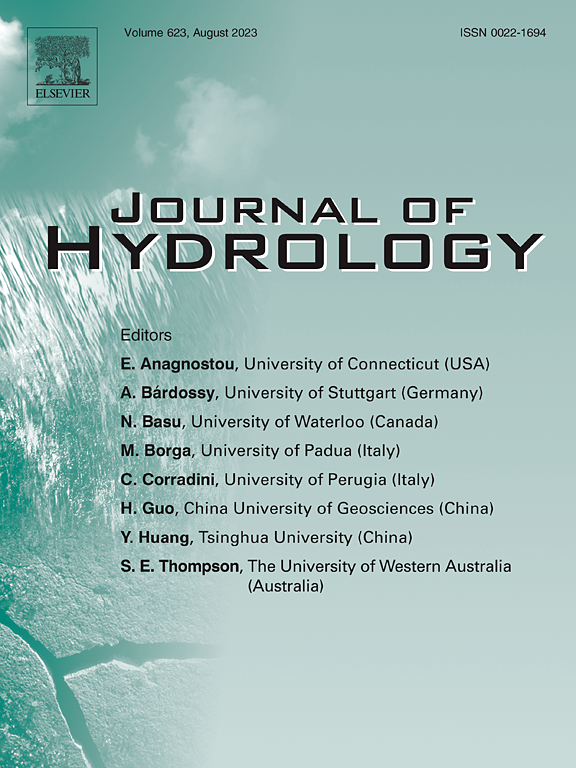暴雨条件下绿色屋顶的多功能性能评价:基材层中改良剂的作用
IF 5.9
1区 地球科学
Q1 ENGINEERING, CIVIL
引用次数: 0
摘要
在暴雨天气下,绿色屋顶的功能性能往往不尽如人意,尤其是雨水管理性能。从多功能的角度评估和指导GR组件的设计,可以使GR在实际工程场景中取得有希望的结果。此外,改性剂是否仍能在改善GRs在暴雨事件中的多功能性能方面发挥积极作用,还有待进一步明确。在由40%泥炭土和60%蛭石组成的基质混合物中,分别添加4种不同比例的生物炭、聚合硫酸铁(PFS)和接种哈兹木霉(THI),安装12个改性GR模块。另设无任何修饰剂的对照组。在两个月的试验期内,利用当地近十年的降水资料进行了10次暴雨模拟试验。基于层次分析法(AHP)建立的评价模型,对GR模块的持水性能、养分保持性能、雨水滞留性能和污染物拦截性能及其多功能性能进行了比较和评价。结果表明,任何添加比例的改性剂都能提高改性剂的多功能性能。最值得注意的是,在评价模型中权重系数较低的阻雨性能最好的情况下,GRB-15(15%比例的生物炭)在GR模块中获得了最高的多功能指标。具体而言,在连续暴雨事件中,GRB-15仍能表现出77.87 min的平均延迟流出时间和62.38%的平均雨水消减率。我们建议将更多的生态服务效益纳入到评估其多功能性能的框架中,以澄清和最小化GRs中现有的功能权衡。本文章由计算机程序翻译,如有差异,请以英文原文为准。
Evaluating multifunctional performance of green roofs in rainstorm events: The role of modifiers in substrate layer
Green roofs (GRs) often show unsatisfactory functional performance in rainstorm events, especially rainwater management performance. Evaluating and guiding the GR component design from a multifunctional perspective may enable GRs to achieve promising outcomes in actual engineering scenarios. Moreover, whether modifiers can still play a positive role in improving the multifunctional performance of GRs in rainstorm events needs to be further clarified. In this study, four different addition ratios of biochar, polymeric ferric sulfate (PFS), and Trichoderma harzianum inoculum (THI) were respectively added to the substrate mixture composed of 40 % peat soil and 60 % vermiculite to install twelve modified GR modules. A control group without any modifiers was also installed at the same time. During a two-month experimental period, ten rainstorm events were conducted by simulated rainfall experiments based on the local rainfall data over the past decade. In this case, the water-holding performance, nutrient retention performance, rainwater detention performance, and pollutant interception performance of the GR modules were compared and evaluated, as well as their multifunctional performance based on an assessment model established by analytic hierarchy process (AHP). Results indicated that all the modifiers with any addition ratios could improve the multifunctional performance of GRs. Most notably, GRB-15 (biochar at the ratio of 15 %) obtained the highest multifunction index among the GR modules under the context that only its rainwater detention performance with a low weight coefficient in the assessment model was the best. Specifically, GRB-15 could still exhibit an average delayed outflow time of 77.87 min and an average rainwater reduction rate of 62.38 % in continuous rainstorm events. We proposed that more ecological service benefits that GRs can provide should be incorporated into the framework for evaluating their multifunctional performance to clarify and minimize the existing function trade-offs in GRs.
求助全文
通过发布文献求助,成功后即可免费获取论文全文。
去求助
来源期刊

Journal of Hydrology
地学-地球科学综合
CiteScore
11.00
自引率
12.50%
发文量
1309
审稿时长
7.5 months
期刊介绍:
The Journal of Hydrology publishes original research papers and comprehensive reviews in all the subfields of the hydrological sciences including water based management and policy issues that impact on economics and society. These comprise, but are not limited to the physical, chemical, biogeochemical, stochastic and systems aspects of surface and groundwater hydrology, hydrometeorology and hydrogeology. Relevant topics incorporating the insights and methodologies of disciplines such as climatology, water resource systems, hydraulics, agrohydrology, geomorphology, soil science, instrumentation and remote sensing, civil and environmental engineering are included. Social science perspectives on hydrological problems such as resource and ecological economics, environmental sociology, psychology and behavioural science, management and policy analysis are also invited. Multi-and interdisciplinary analyses of hydrological problems are within scope. The science published in the Journal of Hydrology is relevant to catchment scales rather than exclusively to a local scale or site.
 求助内容:
求助内容: 应助结果提醒方式:
应助结果提醒方式:


